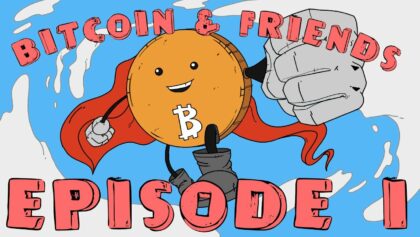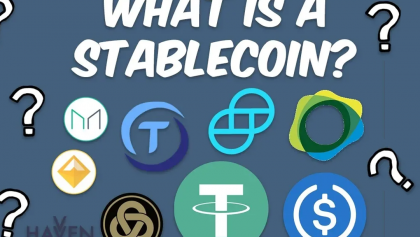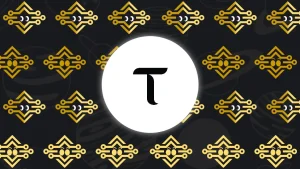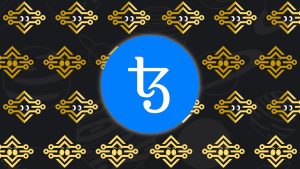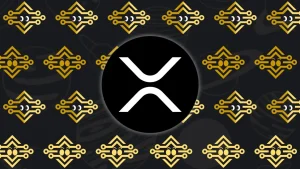Story
Story (IP) is a purpose-built layer 1 blockchain designed specifically to onramp intellectual property (IP) to the blockchain and make it programmable.
Story tokenizes any type of IP; whether that’s an idea, an image, a real world asset, a song, an AI model, an NFT or anything in-between. By embedding usage terms, attribution, and royalty agreements directly into the blockchain, Story provides a transparent, decentralized solution for IP management. This enables IP holders to protect their work, collaborate on IP seamlessly, and unlock revenue opportunities in an AI-powered economy.
Story Protocol is a blockchain-based infrastructure project designed specifically for intellectual property (IP) — i.e., creative works, datasets, inventions, etc. It seeks to register, track, license and monetise IP in a programmable, on-chain way.
Key points:
It’s a Layer-1 blockchain (i.e., its own network) compatible with the EVM (Ethereum Virtual Machine) ecosystem.
It introduces the concept of programmable IP assets — IP rights wrapped in smart contracts, enabling usage rules, royalty rules, derivative tracking.
The native token (“$IP” or “IP token”) is used for gas/fees, governance, staking, and protocol operations.
Fundraising / VC Rounds
The project has reported total funds raised ≈ US$216.3 million in several rounds.
Specific rounds:
Seed Round (May 2023): ~US$29.3 million.
Series A (September 2023): ~US$25 million.
Series B (August 2024): ~US$80 million.
There is also mention of an OTC / token purchase round in August 2025 of ~US$82 million.
Key investors/backers:
Andreessen Horowitz (a16z / a16z Crypto) is cited as a major backer.
Polychain Capital also appears among lead/early investors.
Others: Samsung Next, Hashed, plus some prominent crypto-angels.
Founding year / entity: The project was founded in ~2022.
Headquarters: Listed as Bellevue, Washington.
Tokenomics & Launch Details
Total supply of $IP: 1 billion tokens.
Allocation breakdown (various sources):
~38.4% to Ecosystem & Community.
~10% to Initial Incentives.
~10% to Foundation.
~21.6% to Early Backers.
~20% to Core Contributors / Team.
Some reports summarise as ~58.4% to community/ecosystem/foundation and ~41.6% to backers & team.
Unlock / launch mechanics:
The initial unlocked supply at mainnet launch: ~25% of total supply.
Vesting/unlock for other tokens stretches ~48 months (4 years).
A “fair launch” staking mechanism: no early staking rewards for foundation or insiders; rewards start for all at the same time (“Big Bang” event) after the “Singularity Period”.
Launch details:
The network is a Layer-1 blockchain built using the Cosmos SDK + CometBFT, with EVM compatibility.
Tokenomics details were published ahead of mainnet launch (which is around early 2025).
Timeline Highlights
Project founded ~2022.
Seed funding (May 2023).
Series A (Sep 2023).
Series B (Aug 2024).
Tokenomics published Feb 2025 ahead of mainnet.
Mainnet / staking launch around March 2025 (Big Bang event).
Notes / Caveats
Some fundraising numbers differ slightly across sources (e.g., $134.3 M vs $216 M) depending on whether later rounds are included.
While major VCs like a16z are confirmed in multiple places, full investor list and terms (e.g., share price, exact valuation) are not publicly detailed (or at least not in these open-sources).
As with any new blockchain project, the execution risk is significant — fundraising and tokenomics are strong, but adoption and network effect remain to be proven.
Story Protocol Team
Seung-Yoon Lee — Co-Founder & CEO
Co-founder and current Chief Executive Officer of Story Protocol.
Previously founded Radish Fiction, a serialized storytelling platform acquired by Kakao Entertainment.
Leads overall company vision, ecosystem development, and partnerships.
Background in startups and creative IP markets; studied at the University of Oxford.
Leo (Hao) Chen — Chief Technology Officer (CTO)
Oversees technical architecture, blockchain design, and engineering at Story Protocol.
Responsible for the protocol’s Layer-1 infrastructure and EVM compatibility.
Known for expertise in blockchain infrastructure and scalability systems.
Focuses on bridging legal IP frameworks with decentralized smart contracts.
Ben Sternberg — Chief Financial Officer (CFO)
Heads financial operations, fundraising, and tokenomics.
Coordinates investor relations with major backers (a16z, Polychain, Hashed, etc.).
Background in corporate finance, blockchain startups, and VC relations.
Jason Zhao — Co-Founder & Core Contributor
Co-founded Story Protocol and contributes to its technical and product design.
Formerly associated with Google DeepMind, with a background in AI and data infrastructure.
Plays a central role in defining the IP Graph and derivative-tracking components of the protocol.
Seung Soo Kim — Chief of Staff
Coordinates operations and leadership activities across departments.
Previously worked at Radish Fiction in a similar role.
Supports organizational strategy and cross-functional communication.
Jason Levy — Co-Founder / Advisor
Early co-founder and strategic advisor.
Background includes senior roles at Apple and Amazon.
Focuses on ecosystem growth, partnerships, and product direction.
Other Notable Contributors / Advisors
The Story Foundation has also mentioned additional roles, including:
Head of Special Projects
President of Story Foundation
Ecosystem and Legal Advisors (including contributors from the creative IP and blockchain law sectors)
Headquarters: Bellevue, Washington, USA
Founding year: 2022
Ways to Earn IP
Staking IP tokens
You can acquire IP tokens and then stake them on the Story network to earn rewards.Tokens can be unlocked (freely transferable) or locked (subject to vesting) — locked tokens earn lower reward rates.
There are different staking terms: flexible (unstake any time, subject to unbonding period), or fixed-term (e.g., 90, 360, 540 days) which offer higher multiplier rewards.
Minimum amounts apply in many cases (e.g., a validator minimum ~1024 IP) and there is an unbonding period (reported ~14 days) when you unstake.
Staking also gives governance voting rights and helps secure the network.
Participating in ecosystem activities / testnet tasks
Before and around mainnet launch, Story offered tasks such as participating in its testnet, minting IP assets, doing community work etc., which may lead to early rewards/airdrop eligibility.For example, one source noted that an airdrop was done to those who had participated in testnet tasks.
Doing things like registering IP assets, remixing work, interacting with ecosystem partners might get you recognized for future reward programs.
Using/creating IP assets on the protocol
If you’re a creator or rights-holder, you can register your intellectual property (IP) on Story, attach programmable licensing, and then earn royalties or rewards when your IP is used/remixed on-chain.This is more of an indirect “earn” (via monetising your creation) rather than a direct farming reward.
You’ll need to understand how the licensing modules work, how revenue is shared, etc.
Buying/trading IP tokens (not exactly “earning” but acquiring)
You can acquire IP tokens via exchanges, then stake them or hold them. This is more traditional crypto token acquisition rather than “earning” via protocol participation.
⚠️ Key Things to Consider / Risks
Staking involves lock-ups or unbonding periods. If you choose fixed-term high-multiplier rewards you’ll be “locked in” for that period. (e.g., 90, 360, 540 days)
Validators carry risk: If a validator misbehaves (downtime, double signing) you might get slashed (lose part of your stake) or have reward penalties.
Ecosystem reward programs (airdrops/testnet tasks) may change, may have eligibility criteria, may be limited.
Token price risk: As with any crypto, holding or acquiring IP means exposure to market risk.
Some “locked tokens” earn lower rewards (e.g., 0.5× vs unlocked) even though they have the same governance weight.
Make sure you’re using official dashboards/validators and understand minimums, fees, unbonding periods, etc.
You can purchase Story (IP) using these methods:
- Crypto Exchanges: Platforms like MEXC let you buy Story using fiat currency or other cryptocurrencies.
- Wallet Applications: Apps like MetaMask and Trust Wallet offer built-in purchase options for IP.
- Fiat Onramps: Buy ETH with credit cards, bank transfers, or PayPal via platforms like MoonPay or Simplex.
How to Stake IP
Acquire IP tokens and move them to a compatible wallet (e.g., MetaMask, Keplr).
Visit the staking dashboard: e.g., the official portal at staking.story.foundation and connect your wallet.
Choose a validator from the list of available validators (reliability, commission, uptime matter).
Enter the amount of IP tokens you want to stake. Minimum amount: 1,024 IP.
Select a staking option:
Flexible (you can later unstake after the unbonding period)
Fixed-term (lock your stake for 90, 360, or 540 days) which increases reward multiplier.
Confirm the transaction in your wallet. Once processed, your IP is delegated, and you begin earning rewards.
To unstake: initiate the unstake (“unbond”) process. There is an unbonding period of 14 days before the IP becomes liquid again.
📋 Key Parameters & Important Details
Minimum to stake/unstake: 1,024 IP.
Unbonding period (unstaking): 14 days. During this period you will not be earning rewards.
Reward periods / multipliers:
Flexible staking (no fixed lock) = base rate with no multiplier.
Fixed staking: 90 days = ~1.1× multiplier; 360 days = ~1.5×; 540 days = ~2×0.
Token type locked vs unlocked: If you stake “locked IP” tokens (those under vesting) you may get lower reward rate (e.g., 0.5×) compared with unlocked tokens.
Reward claiming: Rewards accumulate per block but only distributed once certain threshold is reached (e.g., > 8 IP) in some setups.
Slashing & risks: Validators can be penalised for downtime or mis‐behaviour (which may reduce your rewards, or in extreme cases, part of your stake).
Things to Watch / Best Practices
Choose a reliable validator (low downtime, good commission) — your rewards depend on validator performance.
Be aware of the unbonding period: during those 14 days you cannot access your tokens and you stop earning rewards.
Understand fixed vs flexible stake: fixed gives higher multiplier but locks you in.
If you have “locked IP” tokens (vested), check how they impact reward rate.
Keep your wallet secure: you control the tokens until/while staking.
Consider commission and validator’s terms (some fees may apply).
Understand that staking rewards and token value both carry risk; staking is not guaranteed profit.
1. Market & Token-Price Risks
As a cryptocurrency, IP is subject to high volatility — price swings can be large and fast.
The token’s value depends on market perception of the protocol’s success, which is uncertain.
Even if the protocol works well, broader crypto market downturns or liquidity crunches can severely impact value.
Large allocations to early backers/team may create sell-pressure when vesting unlocks occur. For example, sources note that only ~25% of total supply was unlocked at launch and the rest is subject to vesting.
2. Adoption & Use-Case Risk
The protocol’s value hinges on how many creators, platforms, and IP owners actually use Story Protocol for registration/licensing. If adoption is slow, token utility may lag.
Even if creators register assets, there’s no guarantee that significant commercial licensing/royalty flows will occur enough to support the ecosystem or token demand.
The model assumes that traditional IP systems will shift significantly into blockchain-based licensing — that is a big structural change and may take a long time (or may not happen as expected).
3. Legal, Regulatory & Intellectual Property Risks
Traditions of IP law vary considerably by jurisdiction. Even though the protocol embeds licensing/royalty logic on chain, the legal enforceability of those smart-contracts and “programmable licenses” may be uncertain in many legal systems.
Verifying ownership and provenance of IP assets and derivative works (especially in digital/AI era) is complex; if the protocol fails to adequately ensure legitimacy, there could be disputes, fraud or invalid claims.
For example, there is reporting about the protocol having a case related to “fake token” or scam IP issuance.
Regulatory risk: As IP becomes tokenised and transferable, regulators may impose new rules (on securities, copyrights, data usage, AI training data) which could adversely impact the model.
4. Technical & Security Risks
As with any blockchain project, there are risks around bugs, smart-contract vulnerabilities, hacks, exploits, especially given the complexity of managing IP graphs, derivatives, licensing modules.
Validator slash risk: Because Story Protocol uses proof-of-stake consensus, delegators staking IP are exposed to risk if the validator misbehaves (downtime, mis‐signing) and gets slashed — you may lose some staked tokens.
Network scaling, performance, interoperability risk: The protocol aims to handle “IP graphs,” derivative licensing, AI-model assets — these are complex and could run into technical bottlenecks or failure modes.
5. Competition & Execution Risk
The idea of tokenising IP and licensing is attractive, but there are many competitors (traditional IP firms, other blockchain platforms) and the protocol may struggle to gain dominance.
Execution risk: The team must build the network, attract creators, integrate platforms, maintain security, grow validators, manage governance. If execution lags, the token could suffer.
Because much of the value depends on future modules (grouping module, metadata module, dispute module) actually being used at scale, delays or failure in their rollout reduce potential.
6. Liquidity & Listing Risk
Some tokens or ecosystems suffer from thin liquidity which increases price slippage or difficulty exiting positions.
If trading volumes are low or exchange listings are delisted, the ability to buy/sell IP may be impaired.
Depending on your jurisdiction (e.g., US), token may face regulatory hurdles or restrictions on usage/trading.
Summary
In short: while Story Protocol and the IP token offer an innovative model for handling intellectual property in the blockchain era, these rewards come with significant risk. The biggest ones: adoption/utility uncertainty, legal complexity around IP, volatility of token markets, technical/security vulnerabilities, and execution competition. If you’re considering staking, buying, or using IP, you should be mindful of these risks and perhaps limit the size of your exposure accordingly.









